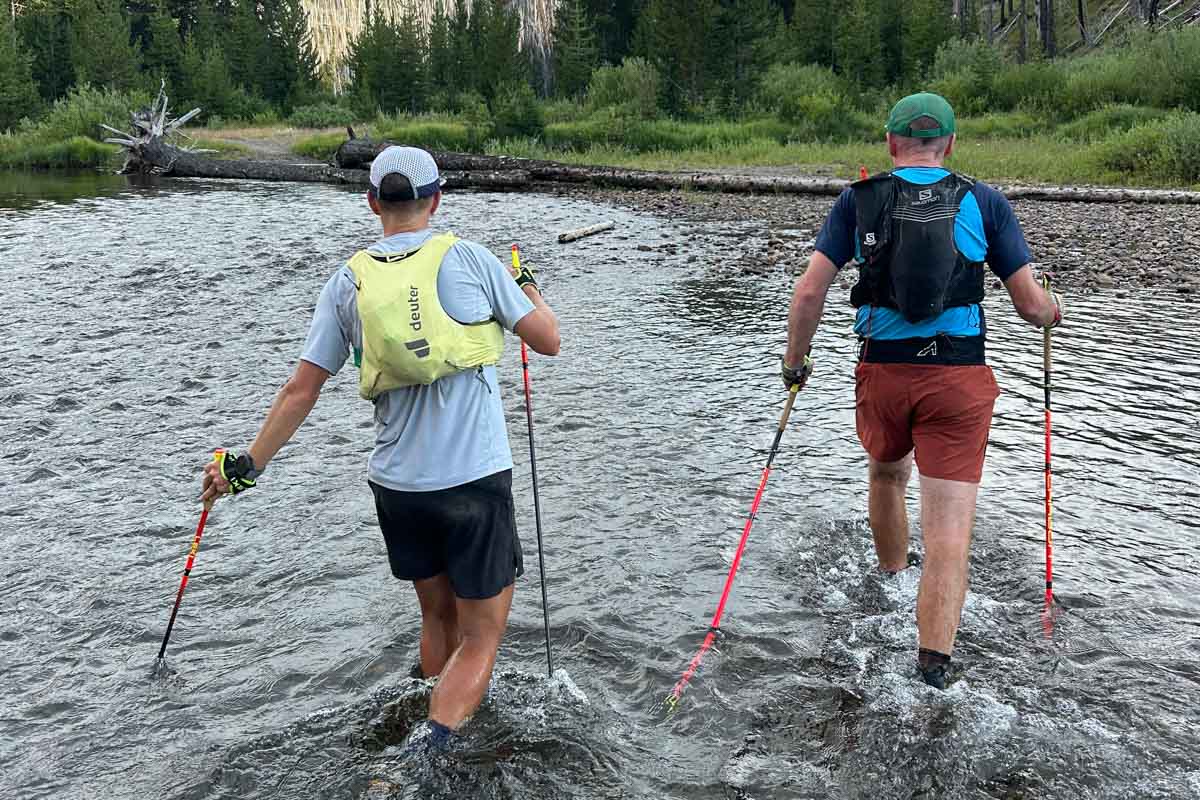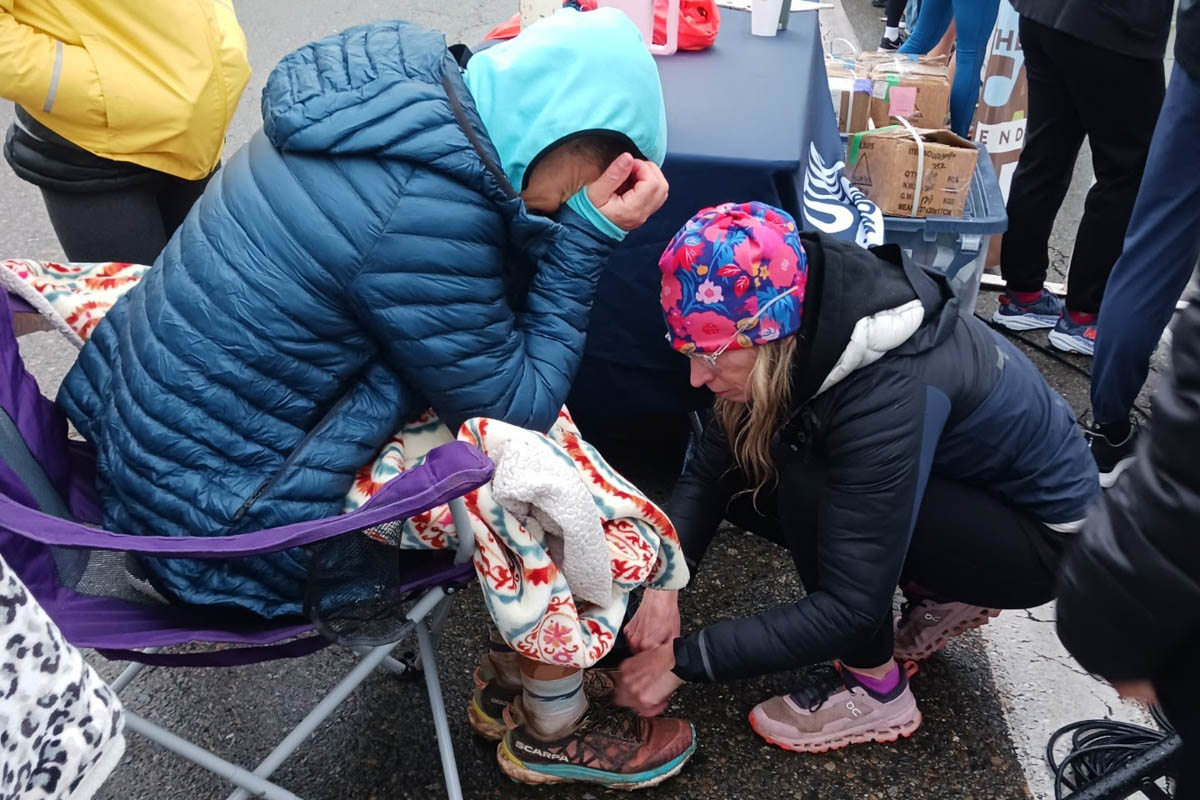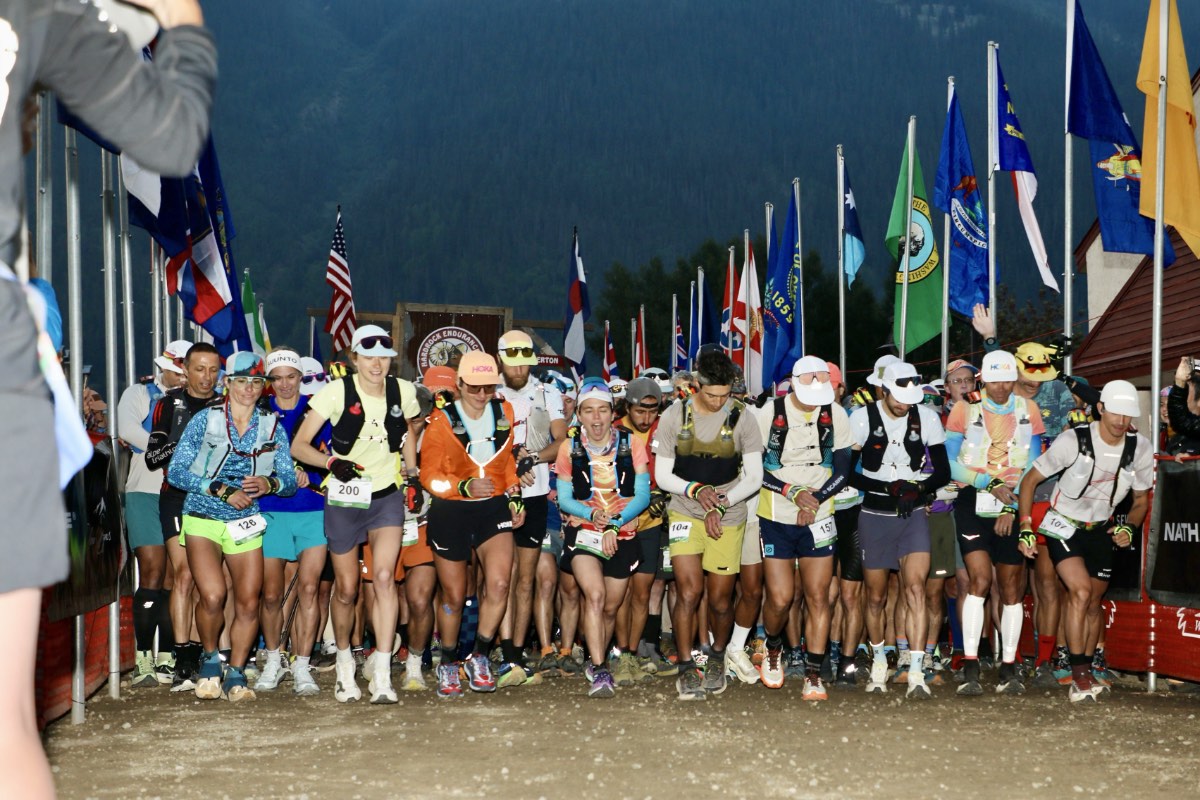In this monthly article series, ultrarunner, race director, and coach Gabe Joyes answers reader questions about anything and everything running. Learn more about this ask-the-athlete column, and be sure to fill out the form below to submit your questions for a future article!
In this article, Gabe answers questions about when to jump up in race distance, the benefits of working with a coach, heel-to-toe drop in trail shoes, and more.
Gabe’s Tip of the Month
Are you terrified of wet feet and blisters? Have you ever been embarrassed to whip out a plastic bag to cover your feet before crossing a creek? Try massaging a wax-based balm all over your feet the night before a race, especially if you plan on having wet shoes and socks nearly the entire time. I typically use Joshua Tree Healing Salve, but when my local shop was out of it before I raced the Dragon’s Back Race last year — six days and 240 miles of running with soaking wet feet — I used Musher’s Secret Paw Protection instead. It worked equally well, even though it is designed for dogs’ paws. There are many other similar products available, but I’ve found the key is to use one where the first ingredient is beeswax, as it absorbs into your skin to make it more water-resistant and tough.
Increasing Race Distance
How do you know when you are ready for 100 milers? I’ve done some 50-kilometer and 50-mile races, and I don’t know how you decide if you should keep working to get those distances faster or jump into the deep end of a 100 miler? Are there specific training or racing metrics you should hit before you can be successful at 100 miles? — Amy
I have seen a few different formulas floating around the internet that suggest you need to run “x” number of miles per week for “y” weeks, and then you are ready for “z” event. Those formulas might truly be a good starting point, but they likely do not have nearly the nuance needed when dealing with unique individuals. A less rigid way of evaluating an athlete’s readiness to jump up a big distance is to consider their training consistency, their ability to recover from training — especially big days, their ability to manage energy, how much joy they find in more running and training, and what their life capacity is to include a bigger race, including family, work, or other life obligations.
An athlete who consistently trains, bounces back from workouts and long runs, does not regularly feel totally wiped out, and has a solid support system in place is almost surely ready for a new and challenging distance. If an athlete finds themselves regularly injured, always dealing with some niggling pain, often too tired to function as their best selves, or dissatisfied with their current running experience, then adding in more is probably not the best solution. That being said, motivated athletes can be surprising and accomplish incredible 100-mile performances with erratic and sub-par training — sometimes if there is a will, there is a way! That approach is rarely, if ever, sustainable, but depending on what your goals are in the sport, maybe “just going for it” is the right move for you.
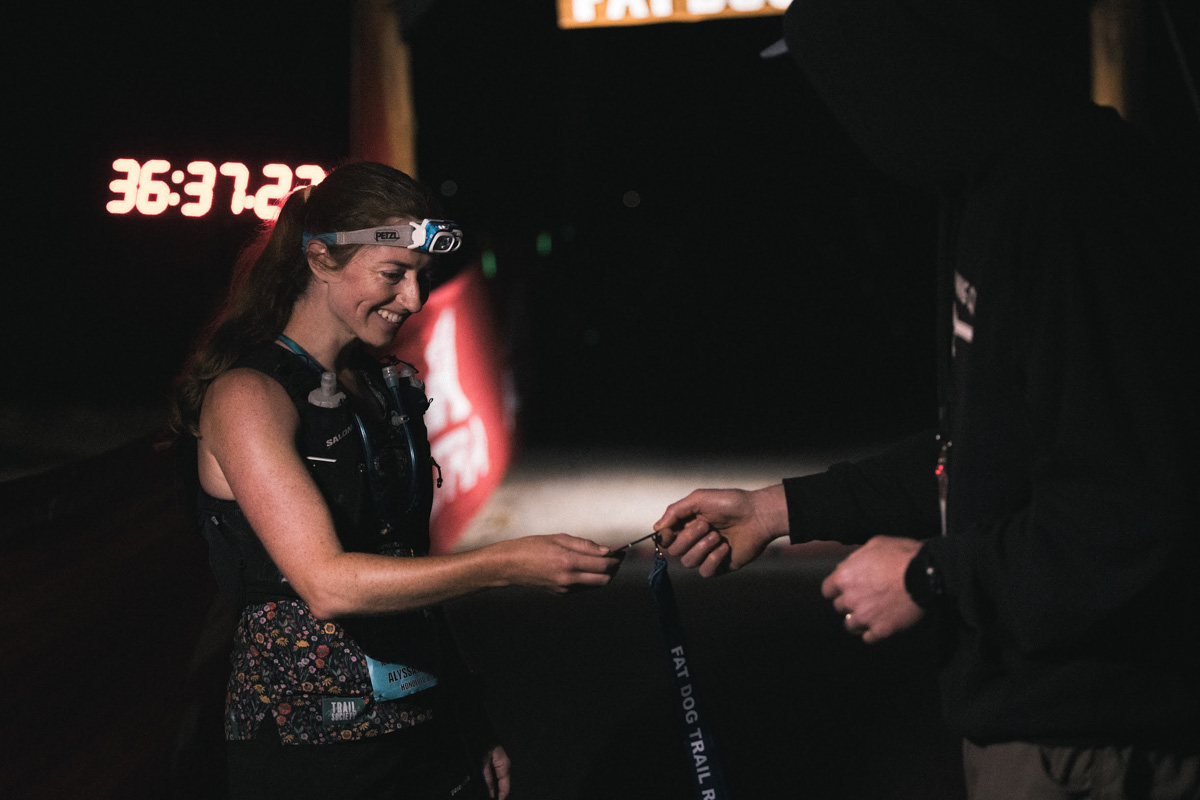
Alyssa Malley jumping up in distance and vert after months of consistency and getting the balance just right. Photo: Matt Cecil
Coaches
You are a coach, but still work with a coach, right? Why would you need someone to coach you if you already know what workouts to do? Are there other benefits to having a coach? — CR
If a coach’s only job were to send an athlete a cookie-cutter training plan to their inbox once a month, then I definitely would not utilize a coach. Because a true coach helps athletes balance training stress with life stress, adjust schedules and workouts on the fly, create a long-term plan with distinct training phases, dial in a race-day plan, manage the emotional and hormonal challenges of race recovery, celebrate all the successes, and navigate all the diverse learning experiences, I choose to work with a coach.
Endurance training is especially challenging because it does take so much time, both in the sense of significant training volumes each week, and in the long term as well, because endurance adaptations just don’t happen all that quickly. I’ve heard the question, “How long before a race should I start working with a coach?” and my answer is, “Start working with one as soon as you possibly can!” The best coaches become an important part of your life and are an invaluable part of your support system. A couple of my past coaches I still consider very dear friends, even if that coach-athlete period of our relationship has run its course.
Heel Drop
When it comes to trail running shoes, how important is heel drop? On the advice of a foot doctor who examined my chronically cranky Achilles (due to a Haglund’s deformity), I only run in shoes with a minimum 8-millimeter heel drop. While this has allowed me to keep running with minimal issues, does that advice make more sense for road running than for trails? Does the constantly changing footing and terrain of trail running make the heel-drop measurement unimportant? — Jeffrey
It really does seem like folks who struggle with chronic Achilles tendon issues do seem to benefit from a higher heel-to-toe drop shoe — perhaps even on trails. You are correct that the extra Achilles tendon support provided by that high drop has a more significant impact in road running as well because of the more repetitive movement pattern that comes with running on tarmac. On trails, particularly ones that are more rocky, rooty, and demand some level of agility, I think that a higher heel-to-toe drop can get in the way of ankle stability because your foot is kept in a slight plantar flexion (downward pointing) position. But if sacrificing a bit of ankle stability is what it takes to keep your Achilles happy, then by all means enjoy that extra cushion under your heel!
But also, take running shoe specs with a grain of salt, as what actually comes out of the factory can be quite a bit different than what is specified on a website. Also, keep in mind that some brands are using firmer foam in the forefoot (how sweet is that alliteration?) and softer foam in the heel, which means that your heel will sink into the foam further than your forefoot will, thus eliminating some of the specified heel-to-toe drop.
Save the Toenails
How do I stop losing toenails after long runs? I think I have lost every single toenail at some point. My feet are unviewable after 100 miles! — Shelbie
I refuse to let you shame your feet — all toes are beautiful! [Update: I saw Shelbie’s feet, and they should be banished into socks for life.] It sure sounds like your shoes do not fit appropriately, as I’ve discovered over the years, if you get the fit dialed in, these sorts of foot catastrophes do not happen anymore. Make sure you get the length, width, and height of the toebox/forefoot just right, and make sure you get the midfoot lock correct, too. Here are some tips:
- Length: In a new pair of shoes, you should have about a thumb’s width of space between the end of your big toe and the end of the shoe. If you come from climbing, soccer, or any other sport that requires tight-fitting footwear, I’m here to tell you it is time to get over this.
- Width and Height: If you are not able to fully spread your toes out, or lift them straight up without feeling constricted, then the toebox of your shoe is also too tight — or possibly your socks are too tight, or not stretchy enough. Your toes don’t need to be swimming in your shoes, but if you want your feet to work correctly and avoid unnecessary friction, then your toes need some room to move.
- Midfoot: The midfoot of your shoe should be rather snug so that your foot does not slide forward in your shoes. Shoes with a bit of arch support seem to help keep feet in place as well. If your midfoot wrap is too tight, you will probably experience nerve pain and lace bite on the top of your feet, which is no fun at all.
No super foam, carbon plate, rubber compound, lacing system, brand name, or athlete-endorsed shoe will improve your running experience more than having shoes that fit juuuust right!
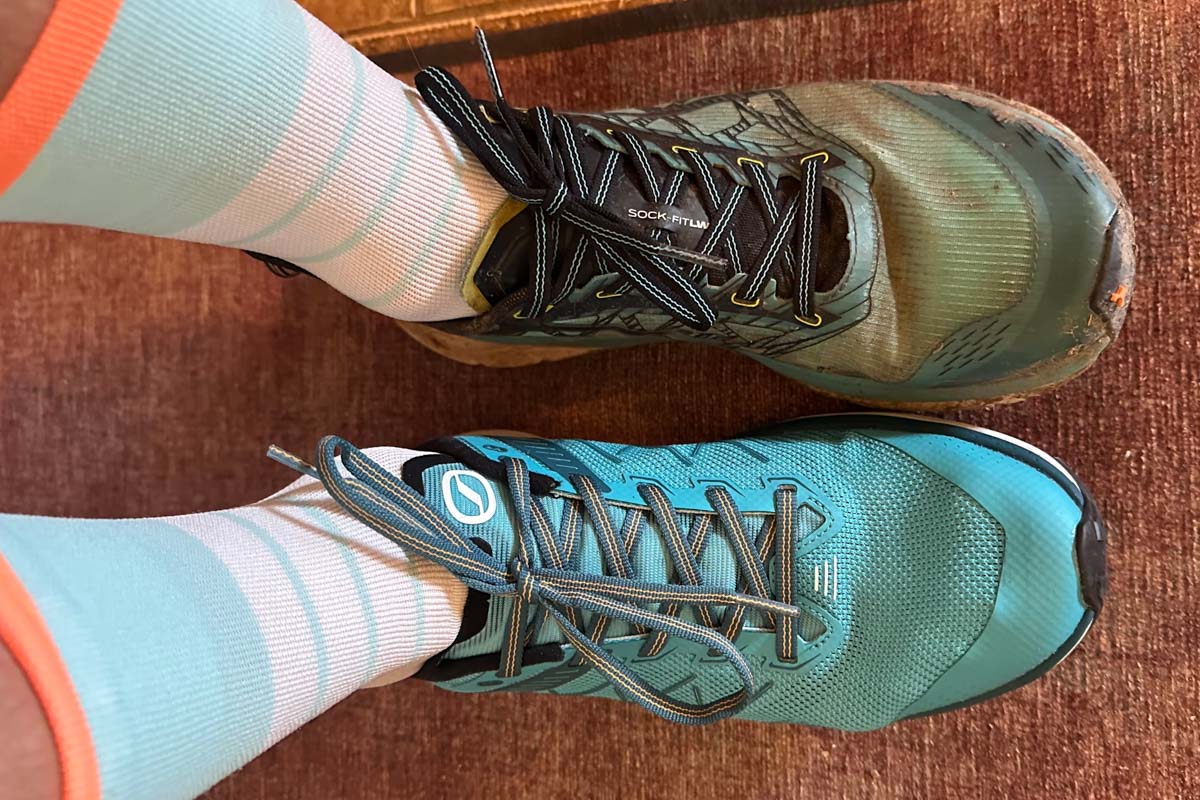
A properly fitting shoe will take you far without taking your toenails as a sacrifice. All photos courtesy of Gabe Joyes.
Submit Your Questions
Send us your questions! Use the form below or send us a message on Instagram, and we’ll consider your questions for future articles.
Call for Comments
- What do you think of Gabe’s answers to this month’s questions?
- What other questions do you have for Gabe? Send them our way!
